Ever think about the material that makes up the clothes you’re wearing? Maybe you don’t like how certain fabrics feel. Perhaps these fabrics pill and snag easily, or are difficult to wash. Maybe you don’t think about it at all.
Regardless, here’s an important question to consider: how do these fabrics affect the environment?
Clothing is responsible for 3% to 6.7% of global human-caused carbon emissions. This is not only from the production of the fabric, but also the care that follows your purchase.
Washing our clothes makes up most of the environmental impact caused by clothing, and this impact varies depending on the fabric. So, if you can skip a wash, do it!
There is no such thing as a 100% sustainable fabric, but some are much better than others. A couple of the major determining factors when labelling sustainable materials are the amount of resources used to produce the material and the life cycle analysis of the product.
A life cycle analysis is a review of the product from “birth” to “death” and its impact through each step along the way. First, let’s take a look at some of the least sustainable fabrics.
The Least Sustainable Fabrics
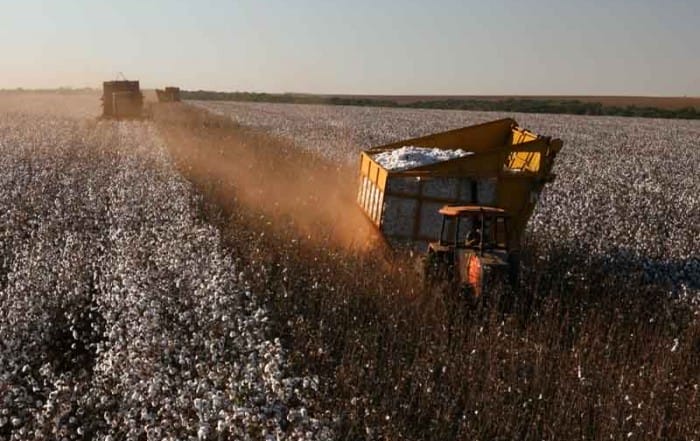
1) Fabrics to Avoid: Polyester
A variety of products can be made from forms of polyester: t-shirts, blankets, rope, conveyor belts, and bottles. It is widely used in clothing items, which you may notice by looking at the tags in your closet. However, this isn’t a particularly good thing.
Most polyesters are non-biodegradable, meaning that it may take anywhere from 20 and 200 years to break down if it’s put into the landfill. Polyester is partially derived from oil, which is a major source of pollution. In the United States alone, the oil and gas industry emits about 8 million metric tons of methane (a greenhouse gas) into the air per year.
Large amounts of water are used for cooling in the energy-intensive process used to produce polyester. This can be dangerous in areas of water scarcity, resulting in reduced access to clean drinking water. Not to mention, the excess water from production is full of chemical dyes that can cause harm to plants, animals, and humans.
If all of this wasn’t enough, polyester also releases microplastics through use and especially during washing. Each washing cycle may release over 700,000 mini plastic fibers into the environment. Microplastics add to pollution and are harmful to marine life when ingested.
2) Unsustainable Fabrics: Acrylic
Some of the most common uses for acrylic fabric are sweaters, hats, gloves, and area rugs. It’s known for its warmth, hence its use in winter clothing. The environmental and health impacts may not give you as warm of a feeling.
Acrylic production involves highly toxic chemicals that can be dangerous to the health of factory workers. The key ingredient, acrylonitrile, can enter the wearer’s body through skin contact or inhalation. Imagine that, wearing a certain fabric could be harmful to your health!
Additionally, acrylic is not easily recycled and can lay in a landfill for up to 200 years before biodegrading, similar to its synthetic sibling, polyester. Estimates suggest that as much as 20% to 35% of all primary source microplastics in the marine environment are fibers from use of synthetic clothing.
So, acrylic production and use is harmful to the health of humans, the environment, and animals. What more convincing do you need to avoid buying it?
3) Cotton (Conventional)
Cotton is one of the most common fabrics used in clothing. It’s super breathable and probably makes up most of the blue jeans and t-shirts in your closet. Conventional cotton production poses many problems for people and the environment.
It takes 1,931 liters of irrigation water and 6,003 liters of rainwater to produce enough cotton for a t-shirt and pair of jeans. The excess water is then polluted with chemicals and dyes. These hazardous materials are expensive to dispose of properly, so many companies end up polluting the riverways instead so their products can remain cheap.
Conventional cotton consumes 16.1% of the world’s insecticide sales and 5.7% of global pesticides. These chemicals increase global warming impact and harm our soil health, water supplies, and the health of farmers.
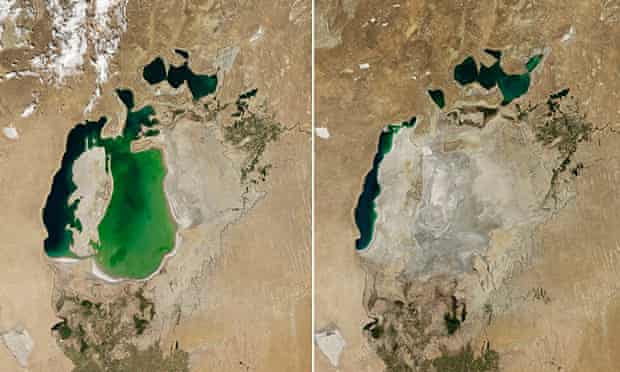
An example of the “true cost” of cotton production can be seen in the Aral Sea basin, which was sucked dry in 2014 due to the amount of water needed in the cotton production process. Commenting on the incident, environmental activist Vandana Shiva stated that “the fashion industry is one of the most polluting industries in the world, causing human misery, enormous cost of life and gigantic environmental devastation.”
4) Rayon (aka Viscose)
When it comes to fabrics, the primary culprit of greenwashing is this material which is made from plants but is actually terrible for the environment. Rayon has been classified as a more sustainable alternative to polyester or cotton; let’s challenge that theory.
Rayon is made by dissolving cellulose (the main constituent of plant cell walls) into a chemical solution and then spinning it into threads. The fiber itself is biodegradable and non-toxic, but the way that it is manufactured can cause harm to factory workers as well as the environment.
The fast-fashion industry often uses rayon to produce cheap clothing using large amounts of water and energy as well as highly intensive chemical processes. These processes release dangerous chemicals into the surrounding air and waterways, which can lead to health problems in both workers and local communities.
Also, the demand for this plant-based material obviously increases the demand for, you guessed it, plants! Many areas are suffering from deforestation due to the collection of trees to produce rayon, including endangered and protected forests. Animals that depend on these trees for their homes are facing habitat loss, which is threatening both endangered and non-endangered species.
Some of the animals that have been placed on the endangered species list specifically due to the fast fashion industry are orangutans, tigers, rhinoceroses, and elephants of Sumatra; the last place in the world where all of these animals co-exist.
5) Synthetic Fabric: Nylon
Typically used in clothing items such as tights and stockings (you may even call them nylons), nylon is a material derived from crude oil. It’s also used to make tight clothing such as swim or active-wear.
No form of nylon is biodegradable and in effect, nylon may sit in the landfill for 20 to 200 years. Unsurprisingly, it is partially derived from petroleum, one of the dirtiest industries and forms of energy. The production of nylon creates nitrous oxide, a greenhouse gas, and it uses large amounts of water and energy.
Similar to polyester, nylon also releases microplastics during use and through washing.
The Most Sustainable Fabrics

1) Organic Cotton or Recycled Cotton Fabric
A more sustainable alternative to conventional cotton is the organic version of the material. Organic cotton is grown without all the harmful pesticides and produced without the dangerous chemicals that normal cotton uses.
The most sustainable way to wear cotton is in its recycled form. This fabric is made with post-industrial and post-consumer waste and uses far less water and energy to produce in comparison with conventional and organic cotton.
Brands that use organic cotton: Pact, Colorful Standard.
2) Organic Hemp Fabric
Hemp is often used in clothing, rope, and boat sails because of its excellent durability. It is also naturally insulating and cooling as well as protective from UV rays. An added bonus: it’s environmentally friendly.
The plant itself is extremely resilient and requires little water to grow. It also returns 60-70% of nutrients to the soil that it lives in! Plus, when it is spun into a fabric, the process requires no chemicals whatsoever. Note that some manufacturers do choose to use a more chemical-intensive process to speed the production, which is not so great for the environment.
As long as hemp is manufactured organically, without added chemicals, it is considered a very sustainable fabric choice. It even gets softer through washing, which adds to its level of comfort.
Hemp plants also produce a nutritious seed which you may have noticed at your local grocery store. If hemp is safe enough to consume, you should have no problem wearing it!
Brands that use hemp: 8000Kicks, Taylor Stitch.
3) Organic Linen Fabric
Known for its light and summery feel in clothing, linen is also produced from a plant: flax. Like hemp, it requires little water and little-to-no pesticides. It is completely biodegradable when left undyed!
The process for manufacturing linen is more mechanically intensive than water intensive, so both the natural plant and the fabric that is derived from it require minimal water. The mechanically intensive process does produce some emissions, but the overall process produces far fewer carbon emissions than most other fabrics, according to Green Story’s Green Fabric Guide.
The flax plant is highly available, and the process to make linen from it is high yielding. It’s an excellent option for local production and is very sustainable when untreated.
Like hemp seeds, you may also have heard of flax seeds as a common topper for salads or smoothie bowls. Fun fact: when mixed with water, flax seeds produce a vegan substitute for eggs.
Brands that use linen: For Days, Tentree.
4) Tencel Lyocell Fabric
A relatively new fabric, Tencel is made from wood pulp, and its properties are similar to those of rayon. Since it’s derived from plant material, it is biodegradable. According to Green Story’s Green Fabric Guide, the process for creating Tencel fiber was designed specifically to reduce environmental impact.
The production of Tencel uses only one-third of the water that is needed to produce rayon, and over 99% of the water and solvents used are able to be recycled! That means there is no need for new solvents.
This greatly reduces the release of dangerous chemicals into the surrounding environment. Plus, the solvents used in Tencel production are non-toxic, unlike those of viscose.
Tencel is on the more expensive side of things, but it’s very durable and will last a long time. You get what you pay for! While it is not widely available for production yet, the industry is growing fast.
Brands that use Tencel: Toad & Co, Ministry of Supply.
5) Recycled Polyester (rPET) Fabric
This material is often made from plastic bottles that would have gone to the landfill. This is a fantastic solution to the plastic pollution issue, and it reduces the need for raw materials. The recycled version of polyester is a much more sustainable option since it skips the energy-intensive oil extraction process, reducing emissions.
According to Green Story, the production process for recycled polyester uses 35% less water than the regular material. The part that requires the most water is the dyeing process. Plus, a t-shirt made from 100% polyester can be recycled several times before the fabric becomes unusable.
An issue with recycled polyester is that like virgin polyester, it also releases microplastics during washing. One thing you can do to help with this problem is wash your clothes less often and use this washing bag which prevents microplastics from entering the waterways.
Brands that use recycled polyester: Wolven, Thousand Fell.
6) Econyl Fabric
If after reading about nylon you are looking for a better alternative, try Econyl. This fabric is made from waste materials such as industrial plastic and fishing nets. The process is closed-loop, which seems to be a trend in all of the future fabrics.
Note that since this material is made from plastic, small particles may be released when a clothing item is washed. Econyl is most sustainable in the form of items that do not need to be washed often, such as sneakers or backpacks. For items that do need to be washed try using a washing bag which helps prevent microplastics from entering the waterways.
Brands that use econyl: Outerknown, Girlfriend Collective.
Future Green Fabrics
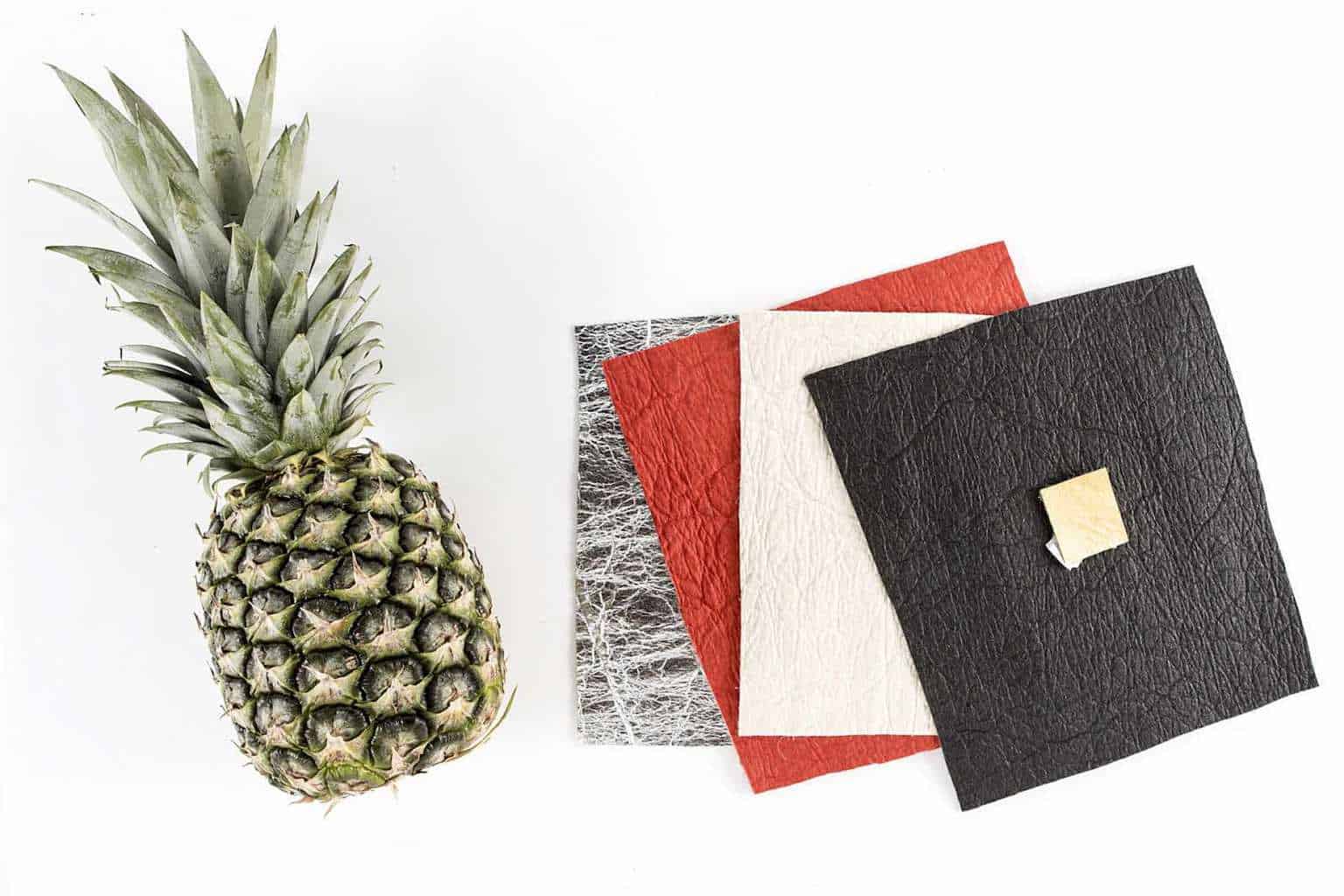
Piñatex
Who would have known that pineapple leaves could be made into fabric? Piñatex is a much more sustainable alternative to leather that supports local fruit farmers. The parts of pineapple that used to be discarded can actually be manufactured into something we can wear!
Ananas Anam manufactured this material in 2017 and currently works with farmers in the Philippines. In comparison to leather, Piñatex requires no additional raw materials for production and uses only non-toxic chemicals which are then reused through a closed-loop system. A closed-loop system continues to use the original input and requires no extra material.
However, it’s not all good news. Piñatex is not biodegradable because the final product contains a percentage of petroleum. Additionally, cultivating pineapples is resource intensive and if the demand for Piñatex rises too quickly, the result could be deforestation.
Qmonos
Even if you’re not a huge fan of spiders, they are very important creatures for a multitude of reasons. One of them is the potential that their web silk holds for sustainable clothing fabrics.
Qmonos is a synthetic spider silk fabric and is one of the strongest fibers in nature. It is entirely biodegradable and requires zero spider farming.
Qmonos is sustainable and ethically made. The material is often compared to nylon and silk regarding its physical properties.
Notes on More Complicated Textile Materials
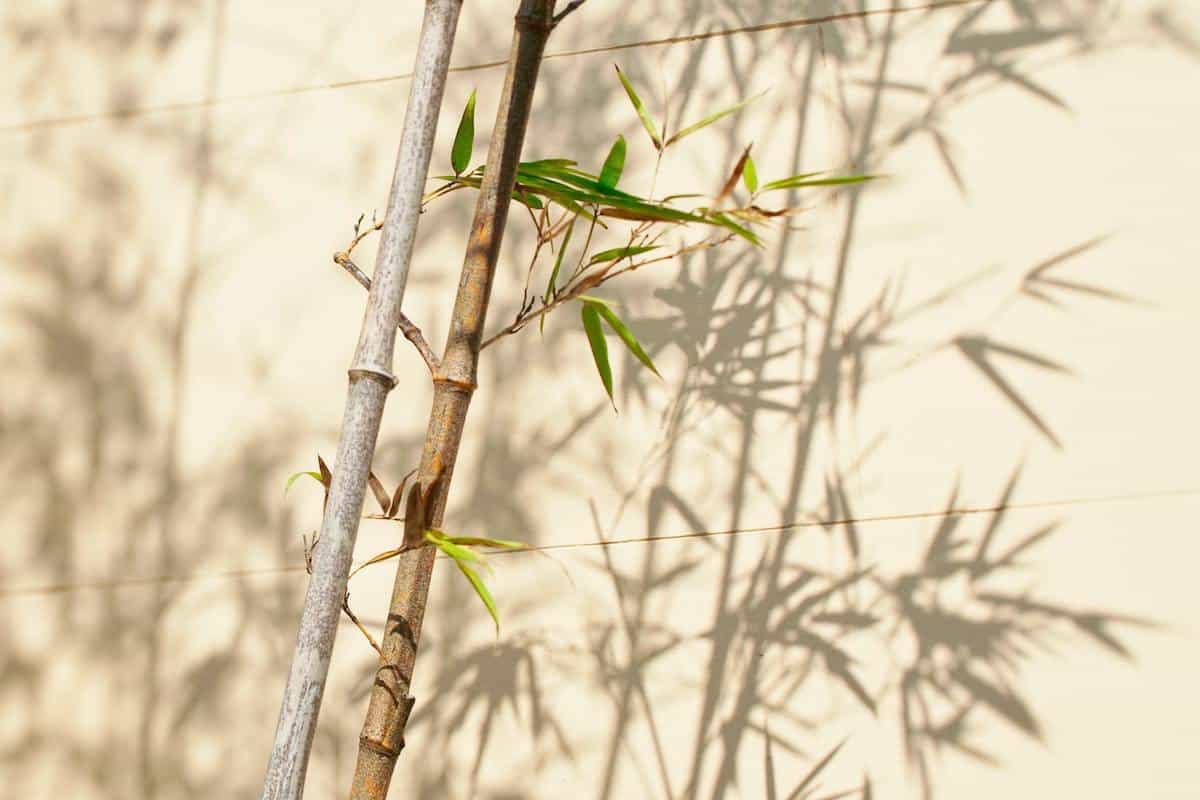
Is Bamboo an Eco Friendly Fabric?
Bamboo is primarily grown in China and Taiwan, and in America the majority of the raw material is imported from China. The material is biodegradable and sustainable in the growing phase, which is why bamboo toothbrushes have become more and more popular.
When it comes to bamboo as a fabric, it is often touted as being eco-friendly due to the availability and high yield of bamboo. The plant grows very quickly, is incredibly resilient, and saves a great deal of water!
But the story does not end there. Most bamboo is manufactured using the same process as rayon, which is fairly chemical and water-intensive. While bamboo can be manufactured more sustainably, such as with bamboo linen, these versions of the fabric are quite rare. For these reasons, GOTS does not currently certify bamboo, even though it’s a natural fiber.
TLDR: it is probably best to avoid bamboo in your clothes unless you know how it was made.
Is Leather Eco-Friendly?
Leather is extremely durable and when sourced without harmful chemicals, as regenerative leather, deforestation free leather, or recycled leather it can make a good choice and be a more eco-friendly fabric.
Leather is an animal product and is not vegan friendly. Many of the environmental claims against leather are tied to the beef industry, of which leather is a by-product, or a co-product, but in either case small compared to the profits from beef.
To read more about leather, vegan alternatives to leather, and the brands doing it right, check out our guide: How Sustainable is Leather?
Is Wool Good for the Environment?
The sustainability of wool is “it depends” – it can have a big footprint or be regenerative depending on how it’s sourced. Arguably wool could have its own article as it gets pretty complicated, but we’ll attempt to address it concisely here.
Some concerns about wool stem from its poor ranking on the HIGG index, but like other fabrics rated by the HIGG index, that’s not the full story. Also worth noting that many vegans are against wool since it is an animal product, regardless of how the animals are treated.
When shopping for wool, recycled wool or regenerative wool are fantastic choices from an environmental perspective.
Is Cellulose Fabric Modal Good for the Planet?
Modal is a man made fabric and a type of rayon, like viscose. The short answer is no, avoid this fabric and see our notes on rayon above.
But naturally, it’s a bit more complicated than that. Like rayon, the primary concerns with modal are the chemicals used to make it and where the trees are sourced from.
There are versions of modal like Tencel™ Modal that are more sustainable in both chemical use and raw material sourcing. Don’t confuse Tencel Modal with Tencel Lyocell (noted above) though, they are different fabrics.
Another way to look for better modal is to look for FSC certification or PEFC (Programme for the Endorsement of Forest Certification) as these help ensure the trees were sourced sustainably.
How Sustainable is Cupro?
While Cupro seems sustainable at first (it’s made from a cotton bi-product) the process to make it is chemical intensive. Worth noting it’s illegal to produce Cupro in the US. Without a certification to verify it was made sustainably, it’s best to avoid it.
Tips for Shopping the Best Sustainable Fabrics
Eco-Stylist
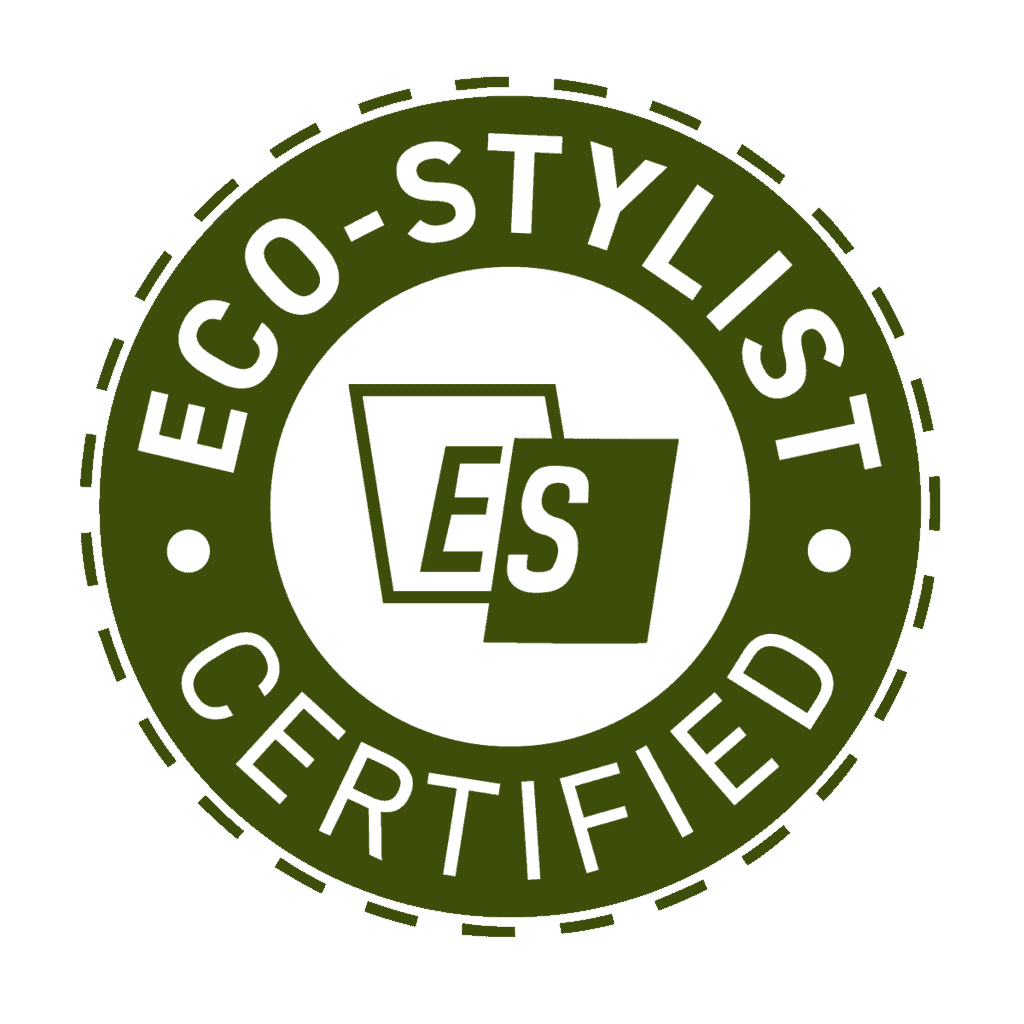
Eco-Stylist approved brands go through a rigorous research process using our sustainable brand criteria. One of the sections of that criteria focuses on fabrics and asks if brands use more than 50% sustainable fabrics across their collections. Most of our brands do.
Browse our shop for clothes made from organic cotton, hemp, linen, econyl, Tencel, rPET, and more! Alternatively check out our full list of sustainable brands.
GOTS Certified Natural Fabrics
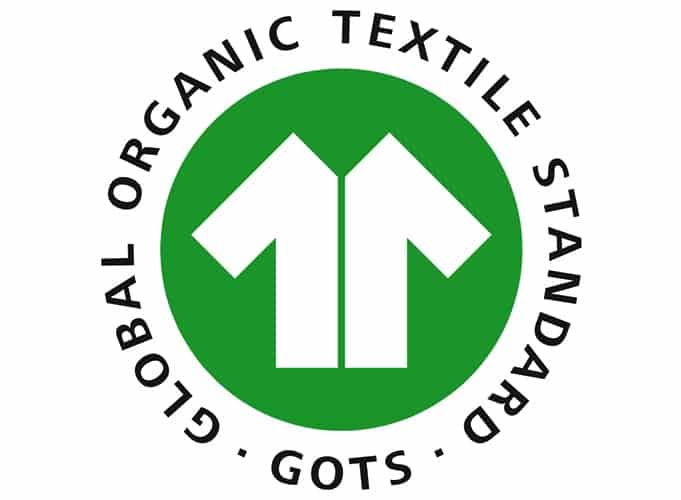
When it comes to natural fibers (cotton, linen, hemp) look for GOTS certification. GOTS stands for Global Organic Textile Standard, and certification is given to textile products that are made with a minimum of 70% organic materials. Any added chemicals, namely dyes, must meet certain criteria regarding their environmental impact and toxicity.
Water consumption is another main factor that GOTS takes into account in the certification process. They require transparency in data regarding energy and water usage per kilogram of textile. Target goals to reduce overall resource usage must also be in place.
Sharing this Article = Making a Bigger Impact
We hope you gained some insights into how unsustainable some of the most popular fabrics in the industry really are. You now have the information you need to pick out the most sustainable options and vote with your wallet.
Even if you shop secondhand, the fabrics you put on your body matter. Avoid fabrics that may carry toxins and look for the ones you’ll feel good about wearing.
When it comes to purchasing clothes made from sustainable fabrics check out our sustainable brands, check for GOTS certification, and check those tags!
Is there a fabric you have questions about? Hit us up and we’ll write about that too!
*Article updated 11/1/22.
Eco-Stylist is reader-supported. If you make a purchase using our links, we may earn a commission. We only feature fashion brands that pass our sustainable brand criteria. Learn more here.

Kaitlyn is a content writer at Eco-Stylist. She studies Sustainability Science at the University of Iowa. Kaitlyn also loves thrift shopping, listening to Harry Styles, and running her online Depop shop.

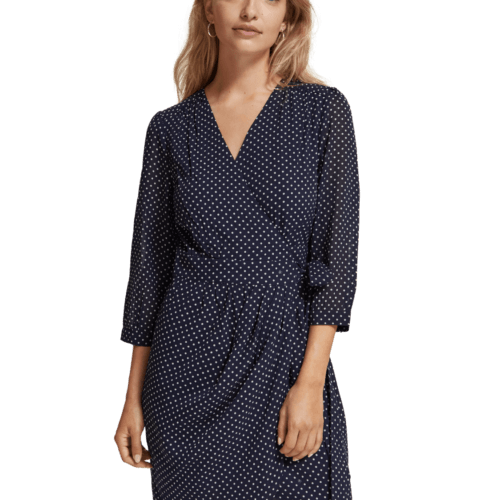


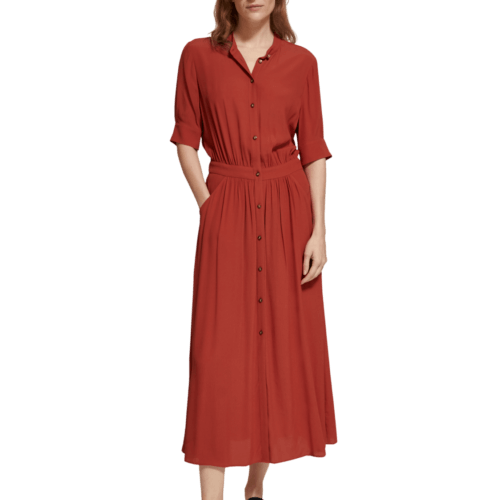

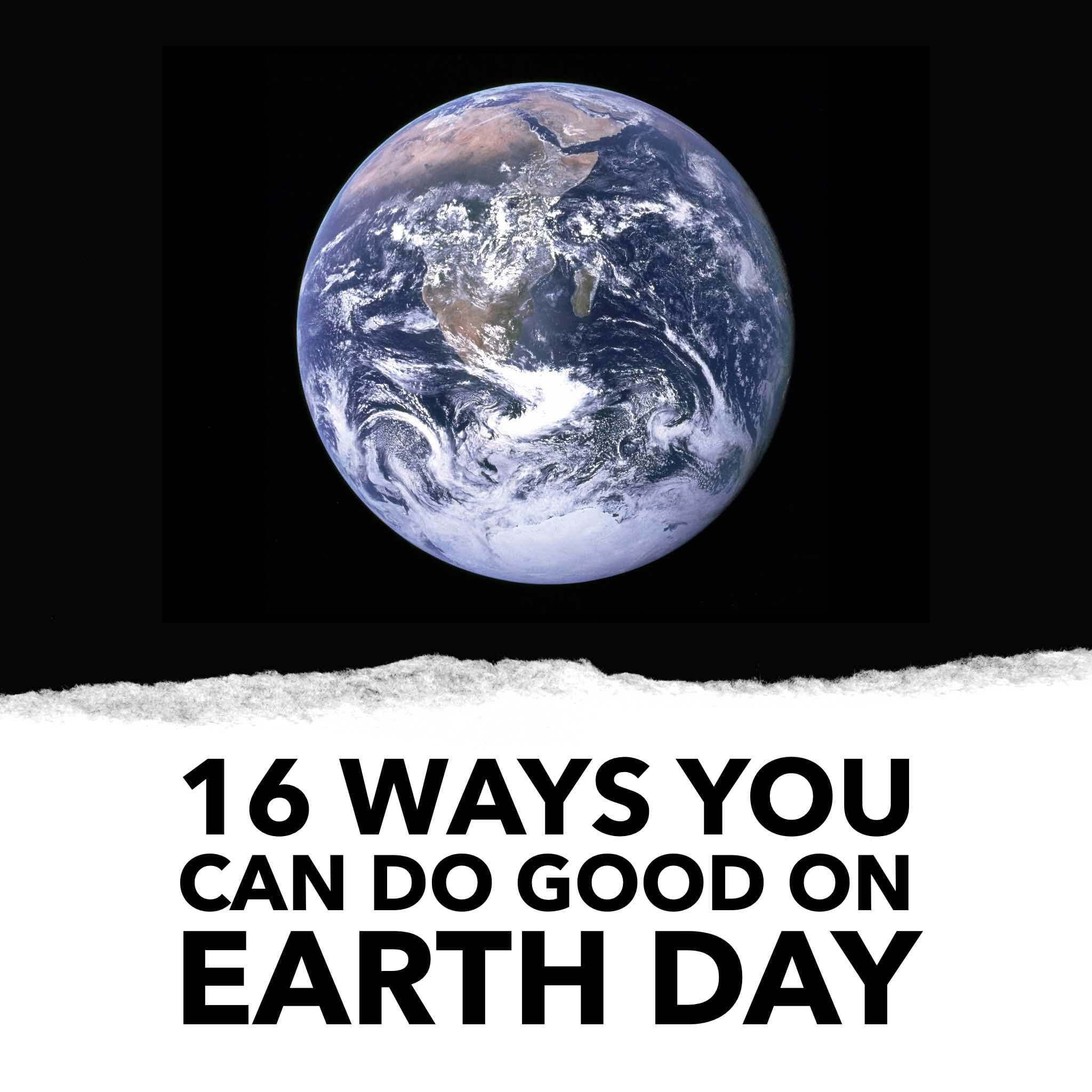

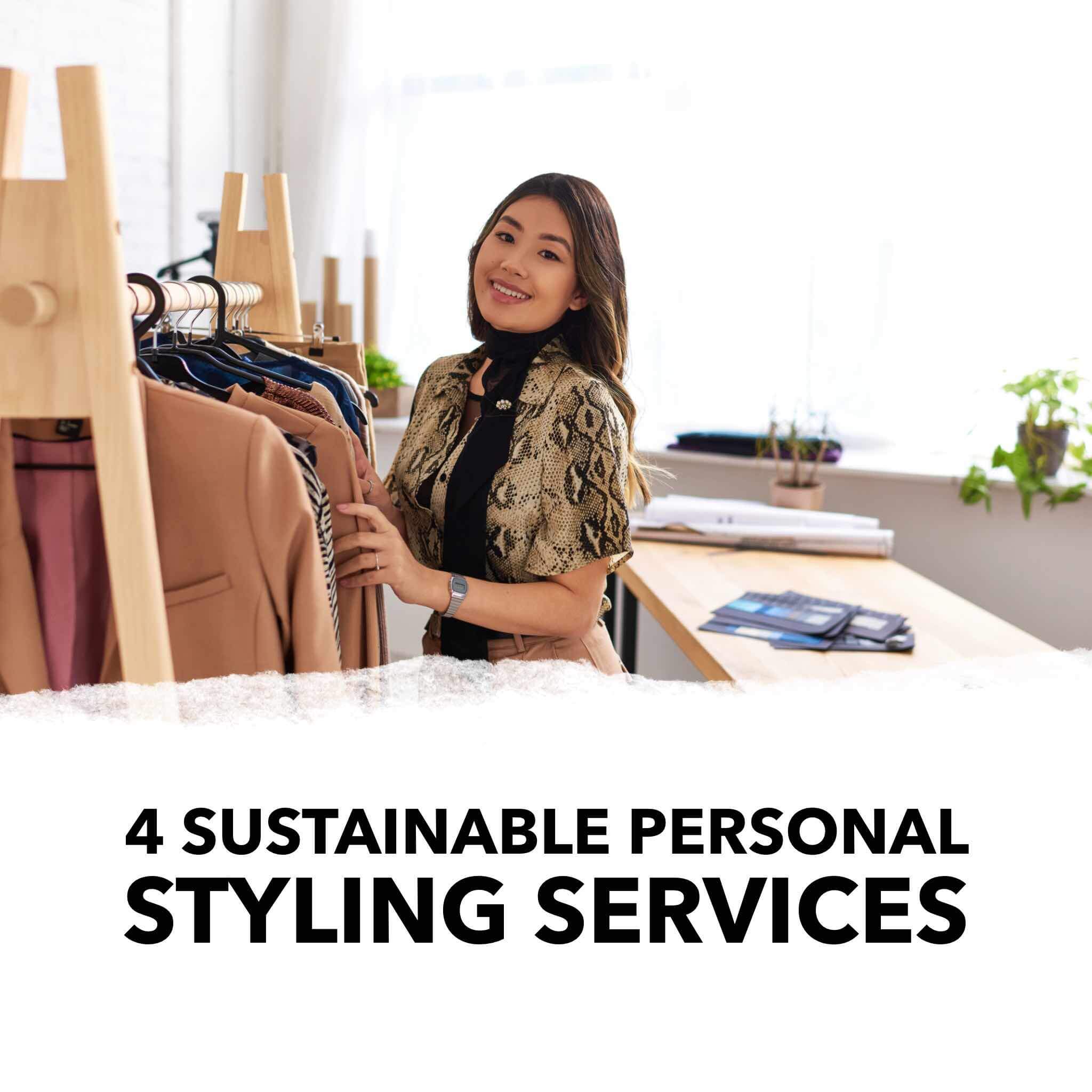

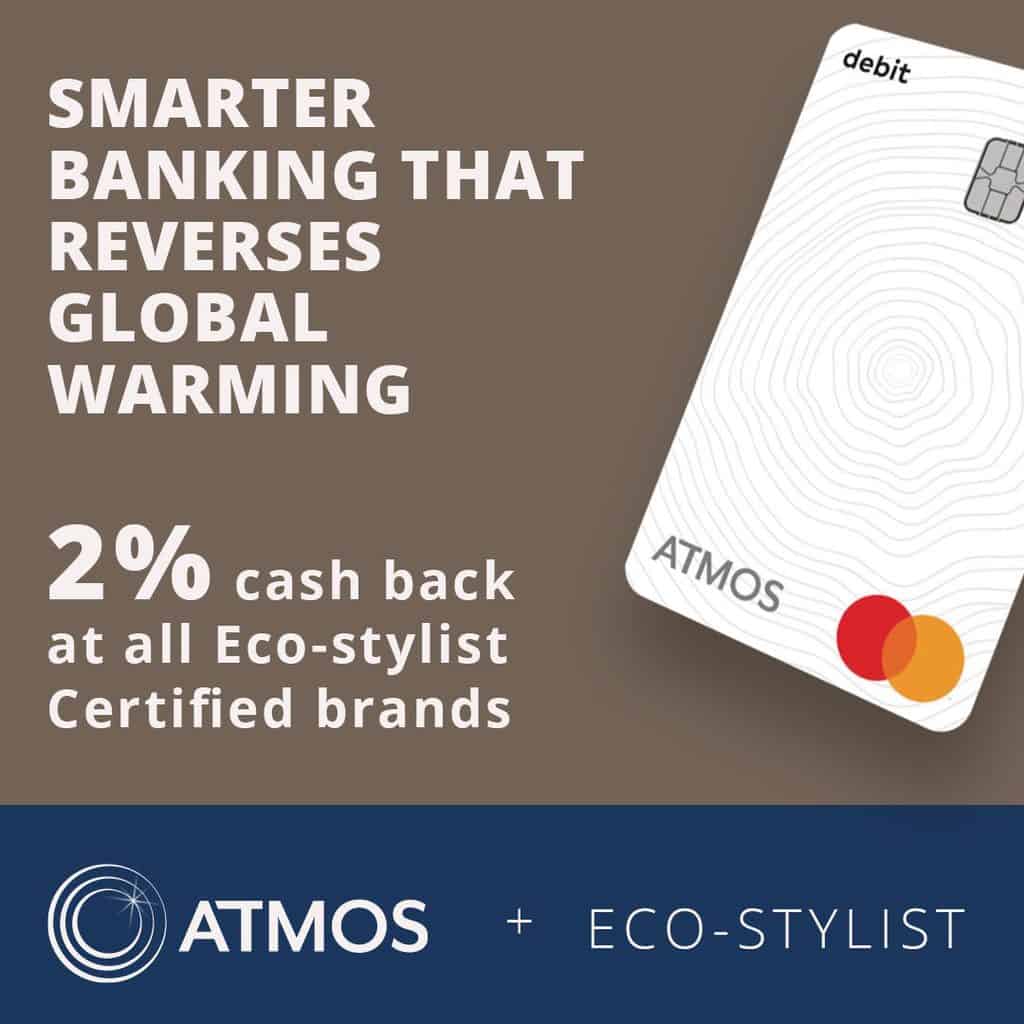
42 thoughts on “A Guide to the Most and Least Sustainable Fabrics”
Have you heard the Biodegradable Polyester? Currently you can find from the market are: CiClo, FUZE , Biosphere & PLA from Corn? They are all green options from Polyester range- although Recycle Poly can reuse Polyester material, however they still there, not disappeared!
Elmas, thank you for sharing additional resources! CiClo looks like a promising innovation and way to make polyester and nylon more sustainable.
Did not know about cotton not being as sustainable as I thought!
Hi, do you know if fabric can be made from reeds or bulrushes? If so. How can I get my hands on some please?
Interesting question! I don’t know a great source for that but you may want to ask on Group Chat or in a Sustainable Fashion facebook group to get input from other brand owners.
Hey Maxine, Yeah – conventional cotton is not good (the largest consumer of pesticides) but organic, regenerative, and recycled cotton are good options.
Here’s a little more info if you’re curious:
https://www.eco-stylist.com/is-organic-cotton-really-sustainable/
Nice content to read.
Thank you!
Im curious where different types of wool fall on these lists seams like a large field without a mention.
Thomas – great question! We’ll consider adding wool to the article although arguably wool could have it’s own article as it gets pretty complicated 🙂
Here’s a few articles that might help:
-Recycled wool is fantastic:
https://greenstory.ca/blog/fabric-faceoff-cork-vs-recycled-wool/
-Wool ranks poorly on the HIGG index but that’s not the full story:
https://www.theguardian.com/fashion/2021/jun/29/woolly-measurement-farmers-say-sustainable-textile-standard-doesnt-pass-the-pub-test
-Basically the sustainability of wool is “it depends” – it can have a big footprint or be regenerative depending on how it’s sourced:
https://ecocult.com/5-surprising-reasons-love-wearing-wool/
Great article!! REMEANT is also an innovative textile and vegan leather substitute made from recycled single use plastic such as bubble wrap and other packing materials take a look here- https://www.remeant.com/
What about wool?
Hey Anna – thanks for your question! See the response I just left above to Thomas’ question and let me know if you have more questions or things you think we should consider.
Great article! Very helpful and informative. Thanks for sharing.
Thanks for the links to wool production. I’m now wondering about silk.
Cheriee, thanks for your question! Silk probably deserves it’s own article. Here’s a good summary on why it’s complicated: https://ecocult.com/why-does-silk-have-such-a-bad-environmental-rap/
Your article has not mentioned silk from silk worms (conventional silk?) Is it still only produced in one part of the world. How does shipping such fabrics contribute to their unsustainability?
Vicky – thanks for your question! Silk accounts for .2% of global fiber production (so it’s not a super popular option). The sustainability of silk is complicated and this article provides a good overview: https://www.treehugger.com/silk-sustainable-impact-5094158
Shipping fabrics does impact their sustainability but that comes down more to individual brands and their supply chains versus individual fabrics. There are exceptions of course (for example: most hemp currently comes from China because until recently it was illegal to grow in the US). But generally speaking, brands are shipping all kinds of fabrics from all over the world. And to your point that shipping definitely has an impact. One way brands work on being more sustainable is having a more localized supply chain (and therefore less shipping). One example of this is Kotn (https://www.eco-stylist.com/ethical-brand/kotn/), a brand that sources their cotton from Egypt and seeks to centralize their production in that region. AlterX Co. is another brand that considers this impact (https://www.eco-stylist.com/ethical-brand/alterx-co/).
Insightful article.
I’m also stunned about cotton, so thank you for the insights. I found your page while searching for sustainable materials to make scatter cushions and throws. I think it is extremely important for all of us to start being intentional about what we use and protect the environment.
Thanks Neli, glad you found it helpful! 🙂
Pinatex fabric was an interesting part of this post. Thank you for sharing all the details about most fabrics. Helps to choose the right fabric.
You’re welcome!
Great article. At Future Green Fabrics, there are also muskin, Desserto leather and Cork Leather, in addition to Piñatex. HZCork is a good choice.
Thanks for the additions!
I remember hearing that, while it’s difficult to work with, kudzu makes *really* durable fabric. Since it’s an incredibly fast-growing invasive plant, using it for fabric would have several benefits.
Don—that’s interesting! Apparently there’s a history of using kudzu in Japan.
That was an amazing article, I learned so much about materials that I had no idea even existed. I’m still stuck trying to figure out which fabric would be best to use as a make-up remover that doesn’t cause much damage to the environment and those manufacturing it.
Thank you! Which fabrics are you considering? I don’t know a lot about make-up removers, but I would think a natural fiber is best if it’s going to be re-useable and washed a lot. You’ll want to avoid microplastics via recycled polyester or recycled nylon. My first thought is that organic cotton, recycled cotton, or Tencel could be good choices.
Great info thank you. Do you have any knowledge about Cupro?
Hey Patricia, in short we recommend avoiding Cupro and opting for a more sustainable alternative like Tencel or Pinatex instead.
While Cupro seems sustainable at first (it’s made from a cotton bi-product) the process to make it is chemical intensive. It’s illegal to produce Cupro in the US. Without a certification to verify it was made sustainably it’s best to avoid it.
Read more here: https://cfda.com/resources/materials/detail/rayon-viscose
In addition to these sustainable fabrics, I would like to add one more: cork fabrics.
Cork fabrics are made from the bark of the Portuguese cork oak tree (no trees are cut down) and are a renewable resource.
Cork fabric has a similar feel to leather: soft, smooth and supple. It is often used to make handmade bags, purses, clothing accessories, craft projects, appliqués, embroidery, shoes or decorative items.
HZCORK is a leading international manufacturer of cork fabrics.
Thanks Andy—someone else also mentioned HZCork in the comments above.
Kaitlyn,
Bamboo is formed in the U.S. and it is not difficult at all. It grows very well here. So well some areas have banned planting it due to how invasively it grows here. I am working towards becoming a bamboo farmer here in Texas….and I won’t be the first. Your article is misleading when it says bamboo is difficult to produce here. Not sure how you made that mistaken connection but it is 100% incorrect.
Hey Vera, thanks for your comment. To clarify, the article wasn’t saying that bamboo is hard to grow in the US. It was saying that if you want to source bamboo to turn into fabric, it’s not readily available in the US, which is why the majority of bamboo (as a raw material) is currently imported from China. I see how the wording could be confusing so I updated it to make it more clear.
That’s exciting that you’re working on local bamboo farming—best of luck getting started!
Please don’t grow bamboo for textiles, it’s extremely bad for the environment. It’s treated with chemicals to make it soft for fabric. I learned this as a college student at FIDM (fashion college). Anything nice said about bamboo being eco friendly regarding the textile industry is CLEAVER MARKETING!!! Market with focus on the good (obviously don’t say any of the bad) & use clever wording in marketing to describe flaws as “unique characterisitcs.”
Besides that, why grow an invasive plant that will destroy the natural environment that native species rely upon?
Why no mention of wool? There are many types of wool & I would really like to see where it fits in on this list.
Shayna, thanks for your question! I added a brief section on wool (see above) but really wool could have its own article. Hope it helps!
Any thoughts on Modal? Supposedly it is derived from the Tencel process, so it should be ok. But for every positive article I read there is another negative one.
Hey Jeremy, thanks for your question! I added modal to the guide (see above). Note that Tencel Lyocell (better) and Tencel Modal (ok) are not the same thing.
I need to wear my clothes longer and wash them less. Can you please comment on Olefin fabric for outdoor cushions? Thank you.
Absolutely enlightening read! ???? Thanks for shedding light on sustainable fabrics. Curious to know, have you checked out Pilario? They seem to offer a powerful solution for companies aiming to integrate sustainability into their business strategy.
rPET is not recycled polyester; it is reprocessed Polyethylene-Terephthalate. While PET is technically a polyester because the compound uses an ester to stitch together the ethylene chain, most polyester fabrics are derived from multiple different ester containing polymers that cannot be economically recycled once spun or woven together; requiring chemical separation before further processing. The only economical and most environmentally friendly way of dealing with them is incineration for power production, where they rank just slightly better than coal in terms of air pollution.